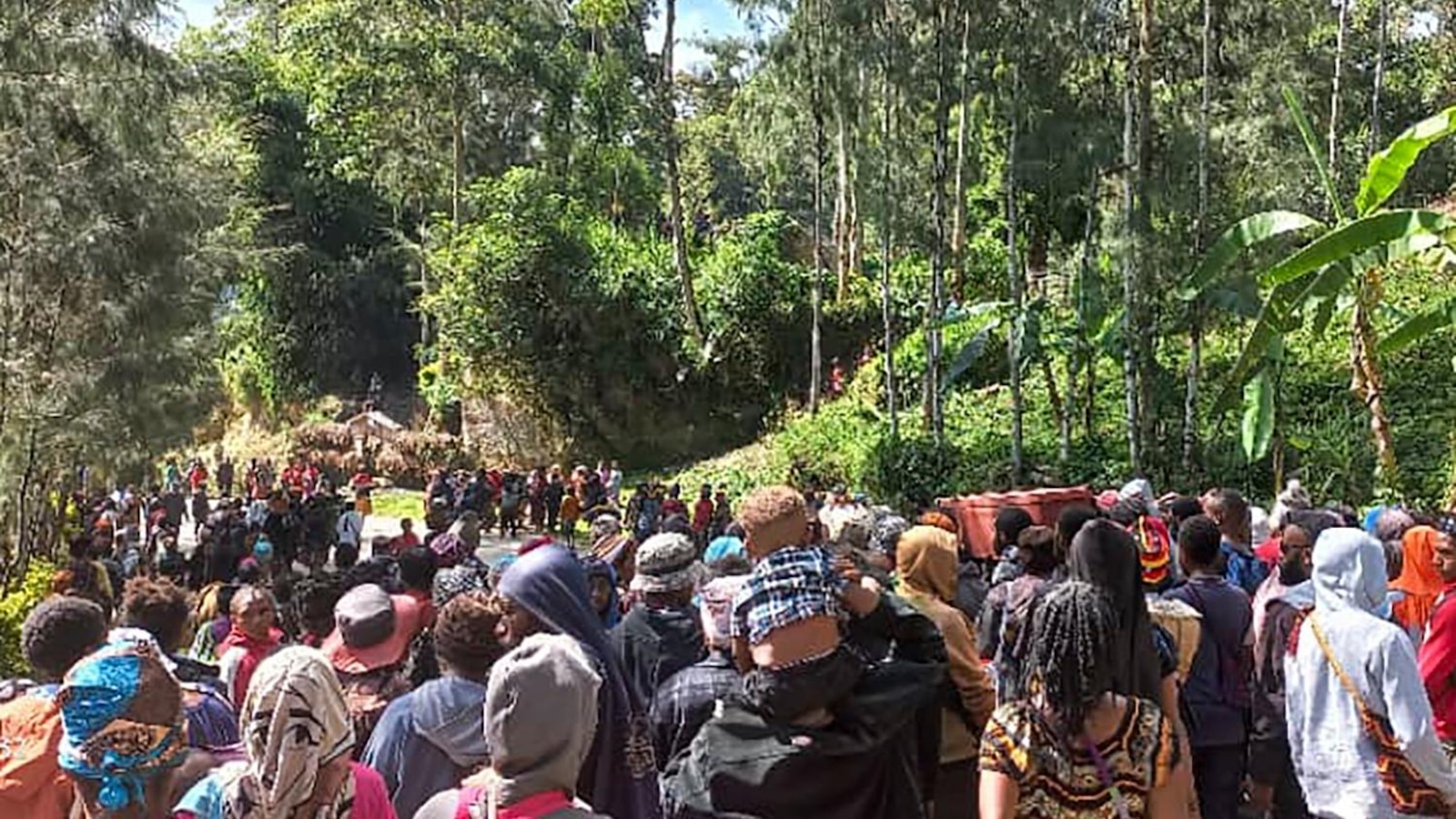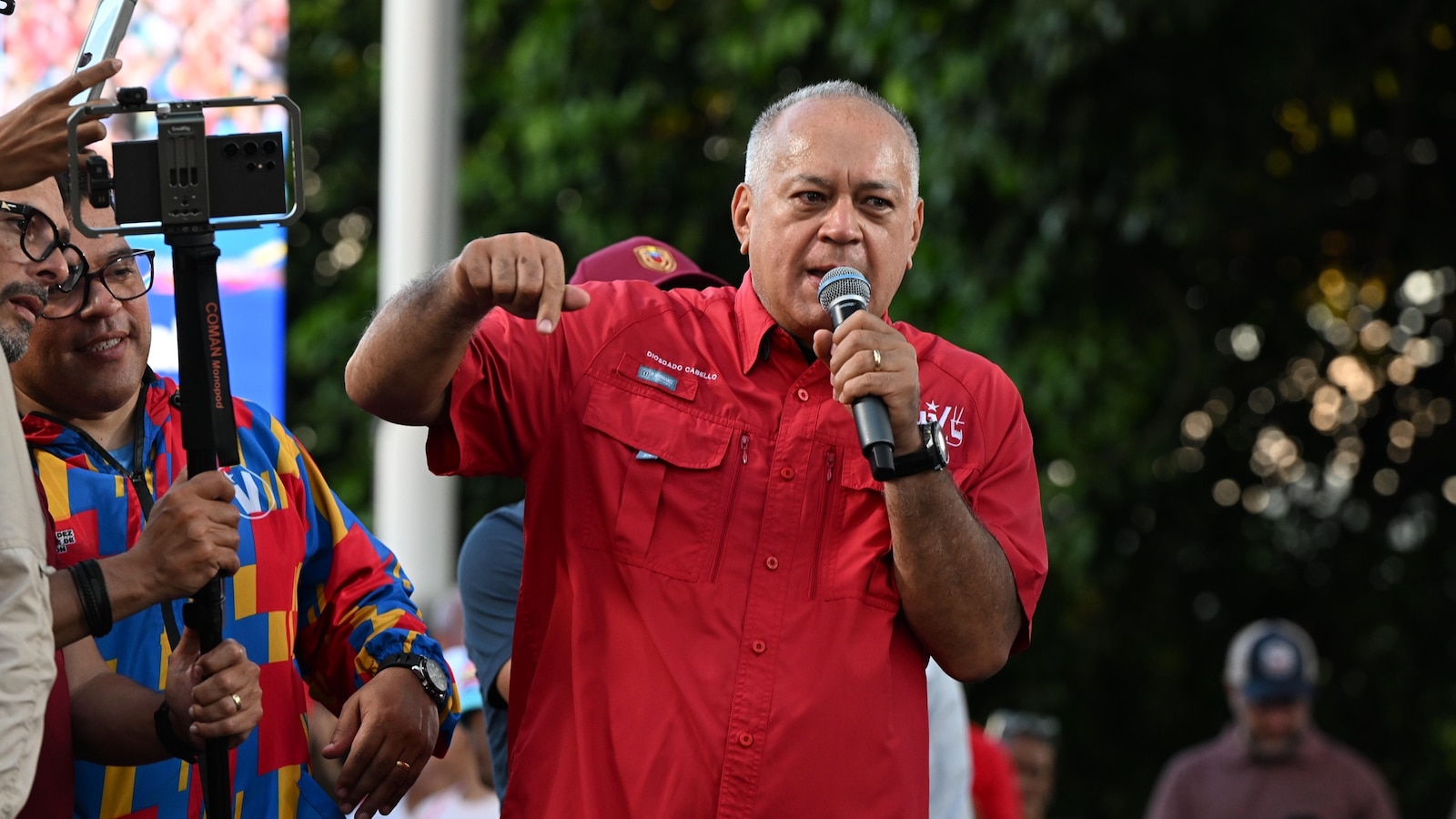
MELBOURNE, Australia — The International Organization for Migration on Sunday increased its estimate of the death toll from a massive landslide in Papua New Guinea to more than 670 as emergency responders and traumatized relatives gave up hope that any survivors will now be found.
Serhan Aktoprak, the chief of the U.N. migration agency’s mission in the South Pacific island nation, said the revised death toll was based on calculations by Yambali village and Enga provincial officials that more than 150 homes had been buried by Friday’s landslide. The previous estimate had been 60 homes.
“They are estimating that more than 670 people (are) under the soil at the moment,” Aktoprak told The Associated Press.
Local officials had initially put the death toll on Friday at 100 or more. Only five bodies and a leg of a sixth victim had been recovered by Sunday, when an excavator donated by a local builder became the first piece of mechanical earth-moving equipment to join the recovery effort.
Relief crews were moving survivors to safer ground on Sunday as tons of unstable earth and tribal warfare, which is rife in the Papua New Guinea Highlands, threatened the rescue effort.
Around 250 additional houses have been condemned since the landslide because of still-shifting ground, leaving an estimated 1,250 people homeless, officials said.
The national government meanwhile is considering whether it needs to officially request more international support.
Crews have given up hope of finding survivors under earth and rubble 6 to 8 meters (20 to 26 feet) deep.
“People are coming to terms with this so there is a serious level of grieving and mourning,” Aktoprak said.
He said the new estimated death toll was “not solid” because it was based on the average size of the region’s families per household. He would not speculate on the possibility that the actual toll could be higher.
“It is difficult to say. We want to be quite realistic,” Aktoprak said. “We do not want to come up with any figures that would inflate the reality.”
Government authorities were establishing evacuation centers on safer ground on either side of the massive swath of debris that covers an area the size of three to four fields and has cut the main highway through the province.
Beside the blocked highway, convoys that have transported food, water and other essential supplies since Saturday to the devastated village 60 kilometers (35 miles) from the provincial capital, Wabag, have faced risks related to tribal fighting in Tambitanis village, about halfway along the route. Papua New Guinea soldiers were providing security for the convoys.
Eight locals were killed in a clash between two rival clans on Saturday in a longstanding dispute unrelated to the landslide. Around 30 homes and five retail businesses were burned down in the fighting, local officials said.
Aktoprak said he did not expect tribal combatants would target the convoys but noted that opportunistic criminals might take advantage of the mayhem to do so.
“This could basically end up in carjacking or robbery,” Aktoprak said. “There is not only concern for the safety and security of the personnel, but also the goods because they may use this chaos as a means to steal.”
Longtime tribal warfare has cast doubt on the official estimate that almost 4,000 people were living in the village when a side of Mount Mungalo fell away. The count was years old and did not take into account people who had relocated to the village more recently to flee clan violence that authorities are unable to contain.
Local authorities on Sunday accepted the village population had been substantially more than 4,000 people when the limestone mountainside sheared away, but a revised estimate was not yet available.
Justine McMahon, country director of the humanitarian agency CARE International, said moving survivors to “more stable ground” was an immediate priority along with providing them with food, water and shelter. The military was leading those efforts.
The numbers of injured and missing were still being assessed on Sunday. Seven people including a child had received medical treatment by Saturday, but officials had no details on their conditions.
Papua New Guinea Defense Minister Billy Joseph and the government’s National Disaster Center director Laso Mana were flying from Port Moresby by helicopter to Wabag on Sunday to gain a firsthand perspective of what is needed.
Aktoprak expected the government would decide by Tuesday whether it would officially request more international help.
The United States and Australia, a near neighbor and Papua New Guinea’s most generous provider of foreign aid, are among governments that have publicly stated their readiness to do more to help responders.
Papua New Guinea is a diverse, developing nation with 800 languages and 10 million people who are mostly subsistence farmers.
A devastating landslide in Papua New Guinea has claimed the lives of more than 670 people, according to the United Nations migration agency. The landslide occurred in the remote village of Hela province, burying homes and trapping residents under tons of mud and debris.
The UN migration agency, known as the International Organization for Migration (IOM), has been working closely with local authorities and rescue teams to assess the extent of the damage and provide assistance to those affected by the disaster. The agency estimates that over 670 people have been killed in the landslide, making it one of the deadliest natural disasters in the region in recent years.
The landslide was triggered by heavy rainfall and unstable soil conditions, which are common in the mountainous terrain of Papua New Guinea. The remote location of the village has made it difficult for rescue teams to access the area and provide aid to survivors. Many residents are still missing, and the death toll is expected to rise as rescue efforts continue.
The IOM has deployed emergency response teams to the affected area to provide medical assistance, shelter, and other essential services to those who have been displaced by the landslide. The agency is also working with local authorities to coordinate search and rescue operations and ensure that those affected by the disaster receive the support they need.
The landslide in Papua New Guinea serves as a stark reminder of the vulnerability of communities living in high-risk areas prone to natural disasters. Climate change is exacerbating the frequency and intensity of extreme weather events, such as heavy rainfall and landslides, putting more people at risk of displacement and loss of life.
As the death toll continues to rise in Papua New Guinea, it is crucial for the international community to come together to support those affected by the disaster and help rebuild their lives. The IOM is calling for urgent assistance to provide relief to survivors and prevent further loss of life in the aftermath of this tragic event.
In times of crisis, solidarity and compassion are essential to help communities recover and rebuild. The landslide in Papua New Guinea is a stark reminder of the importance of preparedness and resilience in the face of natural disasters, and serves as a call to action for governments, organizations, and individuals to work together to support those in need.


